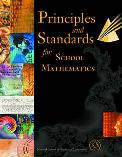|
|
|
|
|
| National Science Education (NSE) Standards
|
top
Please note that The
NSE Standards is a very thorough document and is difficult to
navigate since it was written for a variety of audiences and it
not obvious from the table of contents exactly which sections are
intended for teachers' use in the classroom. To save time when
referencing the standards, you may want to skip directly to the
information pertaining to the Content Standards for grades 5-8,
which begins on page 143.
-
Content Standard A: Science as Inquiry
This standard is absolutely central to the North Star
Activity. Goal 1 is to help students develop several
fundamental skills that support the ability to perform Science
as Inquiry as they:
- Develop descriptions, explanations, predictions, and
models using evidence,
- Think critically and logically to make the relationships
between evidence and explanations,
- Recognize and analyze alternative explanations and
predictions,
- Communicate scientific procedures and explanations, and
- Use Mathematics in all aspects of scientific inquiry.
For more detail on any of these points, see Content Standard
A in the NSE
Standards.
-
Content Standard D: Earth and Space Science
Through this series of lessons and the related scale model of
the solar system activity, students will gain a firm
understanding of the Earth's position in the solar system. This
knowledge will help them see how the Earth's tilt causes the
seasons by changing the angle of incidence of the sun's rays,
rather than by changing a region on Earth's distance to the sun.
(this dispells a very common misconception)
|
| National Council of
Teachers of Mathematics (NCTM) Standards |
top
While The NCTM
Standards is as thorough a document as the NSE Standards, it
was written primarily for teachers, and you will have no trouble
navigating by its transparent table of contents.
-
Number and Operation
A key to this standard is the understanding of the
meanings of operations and how they relate to one another.
At some point in this activity, most students will have to
confront a situation such as this: New Orleans is about 880
miles due south of Madison, and in terms of latitude the two
cities are about 13 degrees apart. To determine the
circumference of The Earth from this information, the students
will have to think carefully about the meaning of arithmetic
operations (or proportionality) to realize that 880 miles
stretches 13/360 of the way around, so there are 360/13 880 mile
pieces in the whole circumference. That is, the circumference is
about 880 X 360 / 13 miles.
-
Algebra
The class will use a graph to analyze the relationship
between latidude and the North Star's elevation.
-
Geometry
Goal 2 is to improve students' command of practical
geometry skills. As urged by the NCTM, students will:
- Analyze Characteristics and properties of two- and
three-dimensional geometric shapes and develop mathematical
arguments about geometric relationships and
- Use visualization, spatial reasoning, and geometric
reasoning to solve problems.
-
Reasoning and Proof
In this activity, students have a great opportunity to apply
mathematical proof to a physical situation. Goal 3 is optional
and serves as a guide if you choose to delve into the
mathematical proof offered on day two. Goal 3 (optional) is
for students to gain confidence and familiarity with the process
of mathematical proof. If you choose to go into this proof
they sould have a chance to:
- Examine a collection of information to detect
regularities,
- Formulate generalizations and conjectures about observed
regularities,
- Evaluate conjectures, and
- Construct and evaluate mathematical arguments.
-
Connections
Here, a basic skill for students is to be able to "recognize
and apply mathematics in contexts outside of mathematics," which
is central to this
project.
| |
 Relevance
Relevance  Relevance
Relevance